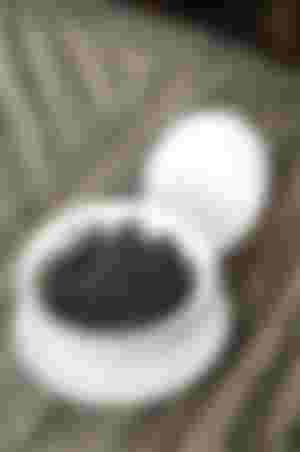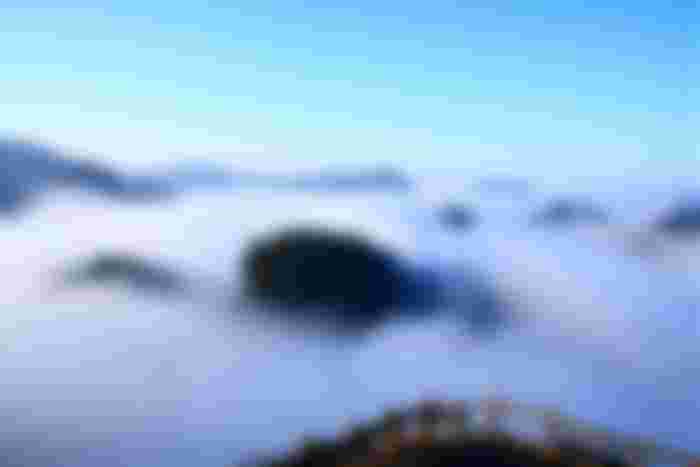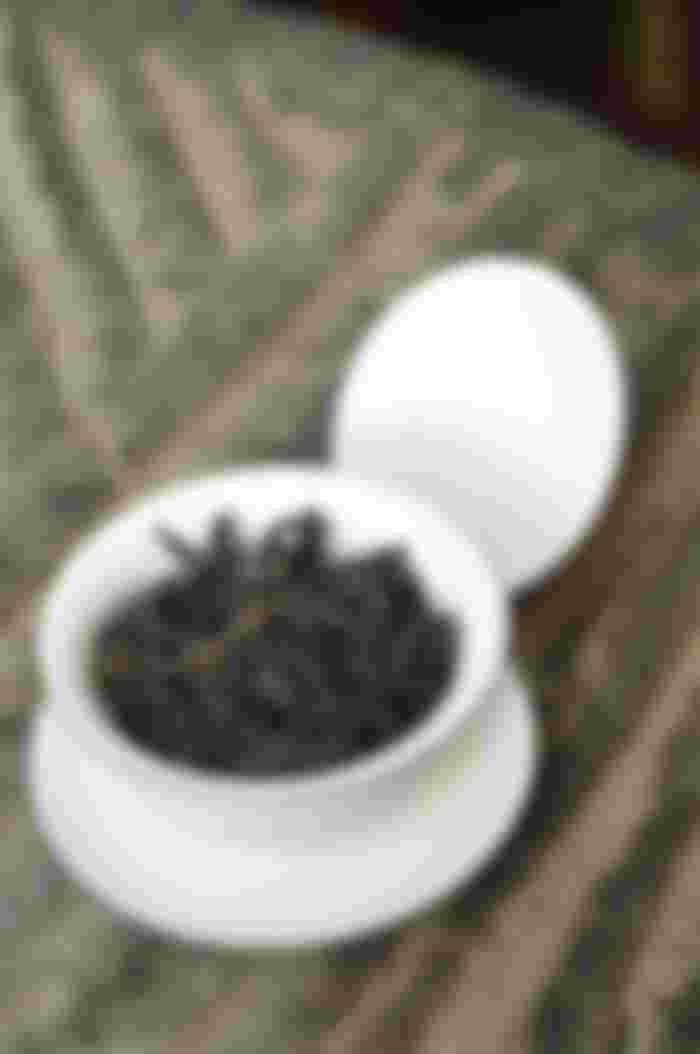
In the northern region of Fujian, along the border to Jiangxi province, a body of mountains dominates the horizon. Rivers wide and narrow envelop them, almost as if materialized by the mountains to act as primordial mirrors for themselves. It is on the cliffs and valleys between these mountains, where a peculiar kind of shrub grows toward the sky. A shrub that must have been left to us mortals as a sign of goodwill from the ephemeral gods of nature, for it reinvigorates mind and spirit with just a single steeping.
A long time ago, as the legends tell us there was a scholar, weakened by sickness, on his way to take the imperial examinations in Peking. A monk from the a temple in the Wuyi mountains saw the scholar’s state and gave him a tea brewed from the leaves of a nearby tea shrub. Miraculously, the tea invigorated the scholar and he went on to Peking and participated in the examinations with exemplary results. As a result, due to his merit, he was given a position at the imperial court. Later on, when the emperor himself fell sick, the scholar returned to use this tea in order to cure the emperor’s illness. A newly reinvigorated emperor rewarded the scholar with a red robe, considered a high honor at the time, and asked him to put a red robe (which was considered a great honor to be bestowed upon at that time) around the tea shrub from which he plucked the leaves from. Afterwards, all teas from this shrub and its descendants were named after the gifted Big Red Robe, in Chinese 大红袍 [Da Hong Pao]
The species of shrub Camellia sinensis is itself quite ordinary. As is the beverage made from the leaves of this plant: Tea. At the same time, however the Wuyi rock teas, as the teas from this region are called, are nothing short of extraordinary.
Tea connoisseurs (and certainly those with the deepest pockets) are certain that the best teas the world has ever tasted come from this region. I for one can attest, that all of the Wuyi rock teas are amazing, to the point that I struggle to find opportunities to drink other kinds of tea as I find myself subconsciously grabbing the bag of Da Hong Pao leaves every time I stand at my tea drawer. Every single time.
But before I talk about my favorite one, here's a list of all teas classified as Wuyi rock tea. The list consists of mostly oolong teas, but there are some black teas too

Da Hong Pao 大红袍 (lit. Big Red Robe)
Rou Gui 肉桂 (Chinese Cinnamon)
Tie Luo Han 鐵羅漢 (Iron Arhat)
Shui Jin Gui 水金龜 (Golden Water Turtle)
Zeng Shan Xiao Zhong 正山小種 (lit. Lap mountains sub-variety)
Bai Ji Guan 白雞冠(White Cockscomb)
Qi Lan 奇蘭 (Rare Orchid)
Jin Jun Mei 金骏眉 (Pretty Golden Eyebrows)
The first four teas are actually all oolong teas and belong to a subgroup of the Wuyi teas called 四大名欉 (lit. 4 Great [Tea] Cultivars). Some of these teas were already well-established by the time of the Song Dynasty, while others only were created as late as the Qing Dynasty.
Zeng Shan Xiao Zhong is technically a black tea, but in case you’re a fan of black teas like On Luck black tea, that. this has a truly distinct taste that in my opinion takes getting used to. The closest thing I could compare the taste to, is the taste profile of a smoky Lagavulin 16 years whiskey I tasted once.
The already mentioned Da Hong Pao Tea is not only the most famous of the Wuyi rock teas but simultaneously the most expensive tea in the world at the time of this writing! In this widespread veneration isn't something that has just come about in recent times: According to Zhi Lin’s 画说大红袍 published in 2011, Da Hong Pao was already being crowned "King of Teas" numerous times during local tea competitions in the Qing Dynasty.
Later on, during the (short) timespan the Republic of China(ROC) was present on the mainland, a single pound of dried Da Hong Pao tea leaves was worth 5000 pounds of rice or 10 buffaloes! At the time the People's Republic of China(PRC) was founded, the harvest of Da Hong Pao become a tighly controlled affair because every worker picking the leaves and making the tea had to be politically vetted. Why? Well, because some of the tea was shipped straight to Beijing to be received by none other than Mao Zedong. In fact, according to the same book stated earlier, Mao gifted 200g of Da Hong Pao to President Richard Nixon on his 1972 visit to China… you know, the very event that caused China to "open itself up" towards the US …. a process that almost 50 years later is seemingly still ongoing with no end in sight but a plethora of hiccups instead.
But alas, let's get back to our teas. Da Hong Pao can be supposedly used for up to 9 steepings, according to my personal vendor but I tend to discard it after just 3 steepings (I do the same with every other Oolong tea I drink too), because that’s the point after which further steepings tend to lose their taste and the signature orchid fragence or “fresh, earthly and flowery fragrence”, as I would describe it. The taste of Da Hong Pao is a unique experience of very faint underlying sweetness, with an earthy taste not unlike that of Pu’er (but not nearly as dominant) topped off by the signature smokiness of fairly oxidized oolong teas. All of it is held together by the familiar taste of Polyphenols (that is, if you don’t brew the tea too strong). Polyphenols are what gives teas whether they are white teas or black teas their characteristic ‘plant infusion’ taste. At the same time, having too much of it is what gives the tea an astringent taste. Many teas come close, but none surpass the flavor profile of Da Hong Pao in my opinion.
Even if it was for just a short time, Da Hong Pao has seemingly managed to create a bridge of friendship between two countries that couldn't have been more different both politically and economially as well as culturally and technologically. Well, it was either Da Hong Pao or the Peking Duck similarly beloved by foreign diplomats. Come to think of it, any oolong tea does go very well with Peking Duck ;-)
I get my Wuyi rock teas (and many other too) through a vendor in Kowloon Tong, Hong Kong but in our modern day and age it shouldn’t be too hard for you to find a Wuyi rock tea. But beware that only Wuyi rock teas from Fujian province are ‘authentic’ Wuyi rock teas the same way only Pu’er teas from Yunnan province are authentic Pu’er teas. I already mentioned that Da Hong Pao is the most expensive tea around but I can’t warn you enough that since this tea has such a cult following, depending on the location and the age of the tree the tea was harvested from, the price for a kilogramm of tea could be astronomically high! So don’t be thrown off by the price, there are enough fairly prized Da Hong Paos around.
Whether it is the famous Da Hong Pao or any other Wuyi rock tea you can find. I can only whole-heartedly recommend you try as many of these teas as possible. Who knows, maybe you'll end up travelling down the 4 Great Cultivars rabbit-hole too?
(Photo #1) by Wikipedia user Shizhao: https://commons.wikimedia.org/wiki/File:Wuyi_Mountains_Sea_of_clouds_2.jpg
(Photo #2) of the porcelain Gaiwan filled with Da Hong Pao tea leaves by aniu7839: https://pixabay.com/de/photos/chinesischer-tee-da-hong-pao-terrine-734224/
https://en.wikipedia.org/wiki/Wuyi_Mountains
https://en.wikipedia.org/wiki/Wuyi_tea
https://en.wikipedia.org/wiki/Si_Da_Ming_Cong_tea
https://en.wikipedia.org/wiki/Da_Hong_Pao
https://en.wikipedia.org/wiki/Rougui_tea
https://en.wikipedia.org/wiki/Cinnamomum_cassia

